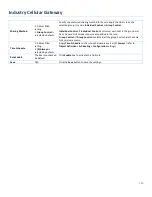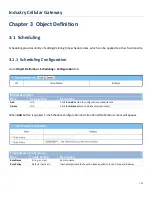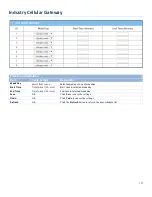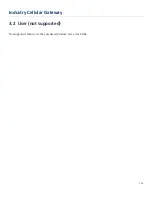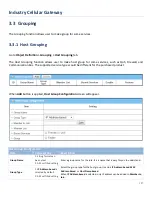
Industry Cellular Gateway
In above diagram, a QoS rule is organized by the premise part and the conclusion part. In the premise part,
you must specify the WAN interface, host group, service type in the packets, packet flow direction to be
watched and the sharing method of group control or individual control. However, in the conclusion part, you
must make sure which kind of system resource to distribute and the control function based on the chosen
system resource for the rule.
The Rule-based QoS has following features.
Multiple Group Categories
Specify the group category in a QoS rule for the target objects to be applied on.
Group Category can be based on VLAN ID, MAC Address, IP Address, Host Name or Packet Length.
Differentiated Services
Specify the service type in a QoS rule for the target packets to be applied on.
Differentiated services can be based on 802.1p, DSCP, TOS, VLAN ID, User-defined Services and Well-known
Services. Well-known services include FTP(21), SSH(TCP:22), Telnet(23), SMTP(25), DNS(53), TFTP(UDP:69),
HTTP(TCP:80), POP3(110), Auth(113), SFTP(TCP:115), SNMP&Traps(UDP:161-162), LDAP(TCP:389),
HTTPS(TCP:443), SMTPs(TCP:465), ISAKMP(500), RTSP(TCP:554), POP3s(TCP:995), NetMeeting(1720),
L2TP(UDP:1701) and PPTP(TCP:1723).
Available Control Functions
There are 4 resources can be applied in a QoS rule: bandwidth, connection sessions, priority queues and
DiffServ Code Point (DSCP). Control function that acts on target objects for specific services of packet flow is
based on these resources.
143






















